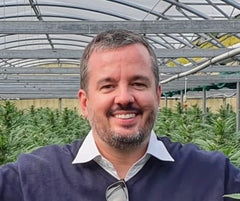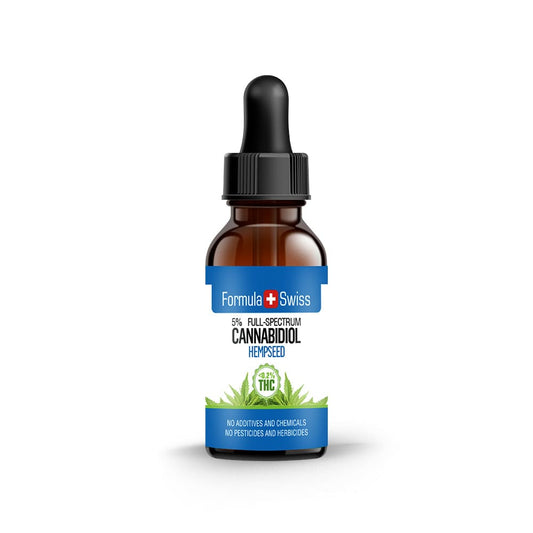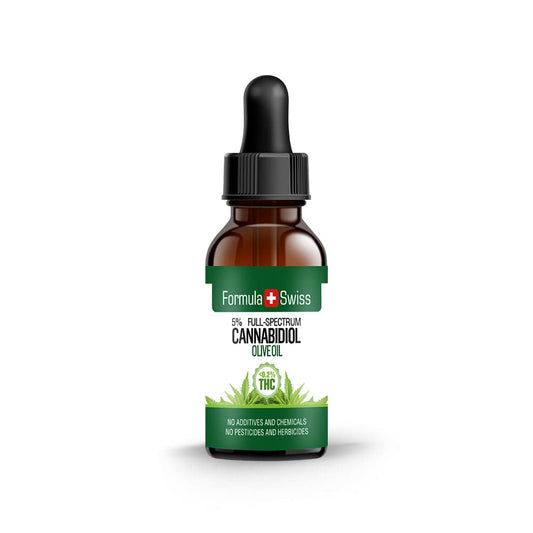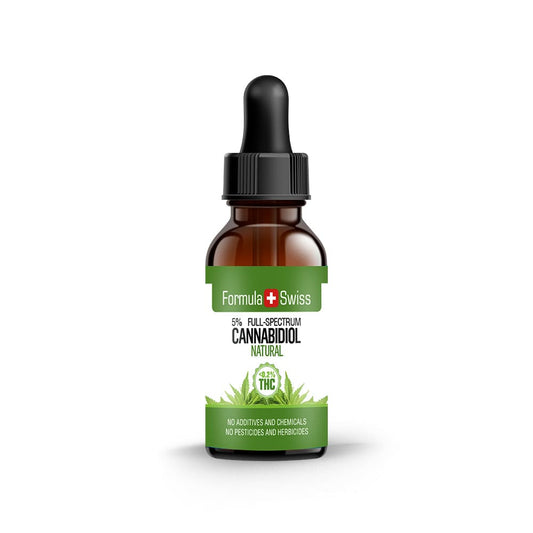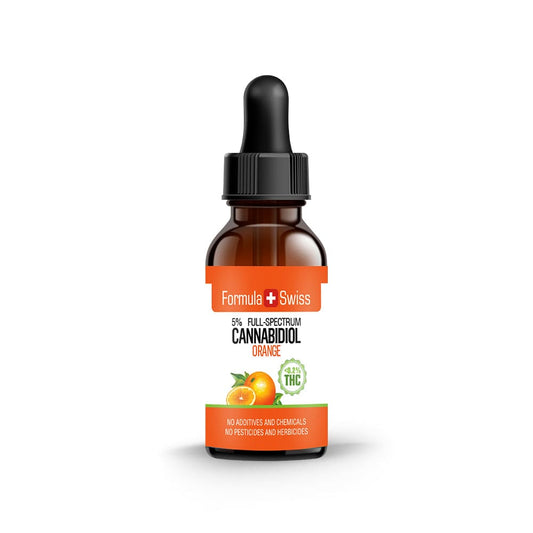The Entourage Effect: A Comprehensive Guide
Cannabis has been used for centuries, yet only in the last hundred years have researchers begun to uncover how its many compounds interact with the body. One of the most intriguing findings is known as the entourage effect, which has reshaped how cannabinoids and terpenes are understood to work together.
Definition of the Entourage Effect:
The entourage effect describes how multiple compounds in cannabis may work in combination to create a stronger influence than they would individually.
In other words, it refers to the synergy between cannabinoids such as THC and CBD and terpenes like limonene and linalool. Together, they may shape how the plant is experienced, compared to single-compound isolates.
Brief History of its Discovery
The phrase “entourage effect” was introduced in 1999 by cannabis researcher Dr. Raphael Mechoulam. While studying THC, he noticed that other compounds in cannabis were also influencing its effects. Since then, research has expanded to explore how different cannabinoid and terpene pairings may alter outcomes in controlled settings.

Importance in the Cannabis Industry
For the cannabis industry, the entourage effect has driven interest in full-spectrum products that preserve a variety of plant compounds. This stands in contrast to isolates, which contain only a single compound. Many consumers and producers see value in maintaining a broader range of cannabinoids and terpenes, not only for aroma and flavor, but also for the way they might work together. This shift reflects growing interest in whole-plant extracts and their role in product development.
Understanding the entourage effect is central to research and product formulation. It emphasizes how cannabinoids and terpenes interact, as well as how receptor sites in the body may respond when multiple compounds are present.
The Science Behind the Entourage Effect

The entourage effect describes a complex interplay between cannabinoids and terpenes. Studying this relationship helps researchers understand how combinations of compounds influence receptor activity and why outcomes differ when compared to isolated compounds.
A Synergistic Relationship: Cannabinoids and Terpenes
Cannabinoids and terpenes are the two main groups of compounds behind the entourage effect. Cannabinoids such as THC and CBD interact with the body’s endocannabinoid system, while terpenes provide aroma and may also affect how cannabinoids are absorbed or utilized.
| Product Type | Cannabinoid Content | Terpene Content | Potential for Entourage Effect |
|---|---|---|---|
| Full-Spectrum | Contains all naturally occurring cannabinoids, including THC | Contains the full terpene profile | High |
| Broad-Spectrum | Contains multiple cannabinoids, excluding THC | Contains all or most terpenes | Medium |
| Isolate | Contains only one cannabinoid (commonly CBD) | No terpenes | Low |
Buy full-spectrum CBD oils here.
For instance, myrcene is a terpene found in many cannabis strains and is thought to influence how cannabinoids pass through cell membranes. Research suggests that terpenes like myrcene may play a role in shaping how cannabinoids interact with receptors, reinforcing the importance of compound synergy.
The Role of Receptor Sites
For cannabinoids to act, they must connect with specific receptors in the endocannabinoid system. CB1 receptors are primarily located in the brain and central nervous system, while CB2 receptors are linked to immune system activity. THC is known to engage with CB1 receptors, while CBD interacts differently, influencing CB1 and CB2 in indirect ways. Terpenes may also alter receptor activity, either by modifying how signals are transmitted or by interacting directly with receptor pathways.
Strain-Specific Effects
Different cannabis strains contain varying balances of cannabinoids and terpenes, giving each one a unique profile. For example, strains high in myrcene may lean toward earthy aromas, while those rich in limonene often have citrus-like scents. The specific blend of compounds can change the overall profile, highlighting why the entourage effect remains a central concept in cannabis research and product design.
The Benefits of Utilising the Entourage Effect
The entourage effect highlights the advantages of keeping multiple cannabinoids and terpenes together rather than separating them. Many researchers believe that these compounds can complement each other, broadening their combined impact.
Increased Effectiveness of Cannabis Products
By combining cannabinoids and terpenes, full-spectrum products may produce broader effects than isolates. Different cannabinoids interact with different receptor sites, and terpenes can influence how those interactions occur. This creates a more layered profile that would not be possible with one compound alone.
| Benefits of the Entourage Effect | Limitations of the Entourage Effect |
|---|---|
| Enhanced influence due to cannabinoid and terpene synergy | Limited scientific data on precise combinations |
| Potential to balance certain compound effects | Challenges in creating standardized formulations |
| Broader compound interactions in one product | Skepticism in parts of the medical community |
| Supports development of full-spectrum product lines | Legal restrictions slow research in some regions |
| Encourages more individualized product options | Difficult to replicate exact formulas consistently |
Reduction in Negative Side Effects
Another aspect of the entourage effect is its potential to reduce certain unwanted reactions linked to single-compound use. For example, some people report feeling uneasy when using high levels of isolated THC. When other cannabinoids and terpenes are present, they may help balance out these effects, leading to a smoother overall profile.
One review, titled Gone to Pot – A Review of the Association between Cannabis and Psychosis, published in *Front Psychiatry* (2014), examined the links between cannabis and psychosis. The authors noted that THC and synthetic cannabinoids could trigger transient symptoms resembling psychosis, and that early or high-dose exposure may increase long-term risk. These findings highlight the importance of studying cannabis compounds in combination rather than isolation.
The authors conclude that the evidence indicates that cannabis may be a component cause in the emergence of psychosis, and this warrants serious consideration from the point of view of public health policy. This study provides substantial evidence supporting the claim that THC can cause experiences of anxiety or paranoia.
Research has documented that when THC is combined with CBD and other terpenes like limonene or linalool which have anxiolytic properties, these negative side effects may be reduced or eliminated altogether.
Similarly, by using full-spectrum CBD oils rather than CBD isolates, users may be able to achieve their desired therapeutic effects at lower doses overall. This is because isolated compounds often require higher doses to elicit their desired therapeutic effect - but by combining them with other compounds through the entourage effect, users may be able to achieve similar therapeutic outcomes at lower doses overall.
More Personalized Treatment Options
The entourage effect also opens the door for more personalized approaches when selecting cannabis products. Since different strains contain varying levels of cannabinoids and terpenes, individuals can explore which combinations best suit their preferences. For example, some may find that a strain higher in CBD and myrcene offers a profile that aligns more closely with what they’re seeking compared to one with higher THC content.
This broader range of compound interactions means that professionals may recommend products tailored to individual needs. A more customized approach could lead to experiences that feel better matched to each person’s situation.
Controversies Surrounding the Entourage Effect
While the entourage effect is often praised, it has also faced criticism and skepticism. A major concern is the limited amount of scientific data on which specific cannabinoid-terpene combinations are most effective. Much of what is currently known is based on preliminary findings and anecdotal accounts rather than large-scale, standardized studies.
Another challenge comes from the variability of cannabis itself. Growing conditions, harvesting methods, and processing techniques can all influence the chemical profile of the plant. This makes it difficult to create consistent formulations, which complicates product development and standardization.
Lack of Scientific Research on Specific Combinations
Despite growing interest, research into the entourage effect is still in its early stages. Most studies to date have focused on individual cannabinoids or terpenes, rather than the full range of possible combinations. This leaves many questions unanswered about how these compounds interact in complex formulations.
Progress has also been slowed in some regions due to regulatory barriers, which limit access to research materials and funding opportunities. As a result, more comprehensive studies are needed to clarify how different combinations function.
Difficulty in Standardising Products for Consistent Results
Consistency is crucial when producing reliable cannabis-based products. However, the natural variability of plants makes it difficult to ensure that cannabinoid and terpene ratios remain the same across batches. Breeding methods, cultivation conditions, and processing all play a role in creating differences from one product to another.
Some researchers suggest that biosynthesized or lab-produced cannabinoids and terpenes may offer a path to greater consistency. Still, this approach raises questions about feasibility, cost, and whether synthetic versions can match the complexity of natural plant compounds.
Skepticism from the Medical Community
Not all medical professionals are convinced that the entourage effect is scientifically proven. Some view it as more of a marketing term than a firmly established concept. Others argue that the risks associated with cannabis use need to be weighed carefully, and that the entourage effect should not be overstated without stronger evidence.
Even with these concerns, many advocates believe that continued study of whole-plant interactions could provide valuable insights. Greater scientific rigor may eventually help confirm the entourage effect as more than just a theory.
Conclusion
The entourage effect highlights how cannabinoids and terpenes may interact to create outcomes that differ from those of isolated compounds. This concept has significant implications for both research and product development, offering a more nuanced understanding of cannabis chemistry.
By exploring these interactions, users and researchers alike can better grasp why different strains produce distinct profiles. While early studies and anecdotal accounts suggest promising possibilities, more research is needed to fully validate the entourage effect and determine how specific combinations influence outcomes.
Future Potential for Further Research and Development
The entourage effect represents an exciting frontier in cannabis science. Continued investigation into cannabinoid-terpene synergy could pave the way for more refined and personalized options, while also reducing inconsistencies across products. Advances in genetic research and cultivation practices may also help improve standardization in the future.
Ultimately, by building on what is currently known about compound interactions, the cannabis industry and scientific community can develop more innovative and reliable products. While much remains to be explored, the entourage effect underscores the importance of looking at cannabis not just as individual components, but as a complex system of interacting compounds.
FAQs: The Entourage Effect
1. What is the entourage effect?
2. How does the entourage effect work?
3. What are the benefits of the entourage effect?
4. Can the entourage effect help with pain management?
5. Does CBD or THC alone provide the entourage effect?
6. What is the role of terpenes in the entourage effect?
7. How does the entourage effect influence the medical use of cannabis?
8. Can the entourage effect be experienced with CBD oil?
9. Is the entourage effect supported by scientific research?
10. How can I maximize the entourage effect?
Sources
- Russo, E. B. (2019). The Case for the Entourage Effect and Conventional Breeding of Clinical Cannabis: No “Strain,” No Gain. Frontiers in Plant Science, 9, 1969.
- Ben-Shabat, S., Fride, E., Sheskin, T., Tamiri, T., Rhee, M. H., Vogel, Z., ... & Mechoulam, R. (1998). An entourage effect: inactive endogenous fatty acid glycerol esters enhance 2-arachidonoyl-glycerol cannabinoid activity. European Journal of Pharmacology, 353(1), 23-31.
- Gallily, R., Yekhtin, Z., & Hanuš, L. O. (2015). Overcoming the bell-shaped dose-response of cannabidiol by using cannabis extract enriched in cannabidiol. Pharmacology & Pharmacy, 6(02), 75.
- Johnson, J. R., Burnell-Nugent, M., Lossignol, D., Ganae-Motan, E. D., Potts, R., & Fallon, M. T. (2010). Multicenter, double-blind, randomized, placebo-controlled, parallel-group study of the efficacy, safety, and tolerability of THC: CBD extract and THC extract in patients with intractable cancer-related pain. Journal of pain and symptom management, 39(2), 167-179.
- Pamplona, F. A., da Silva, L. R., & Coan, A. C. (2018). Potential clinical benefits of CBD-rich cannabis extracts over purified CBD in treatment-resistant epilepsy: observational data meta-analysis. Frontiers in neurology, 9, 759.



